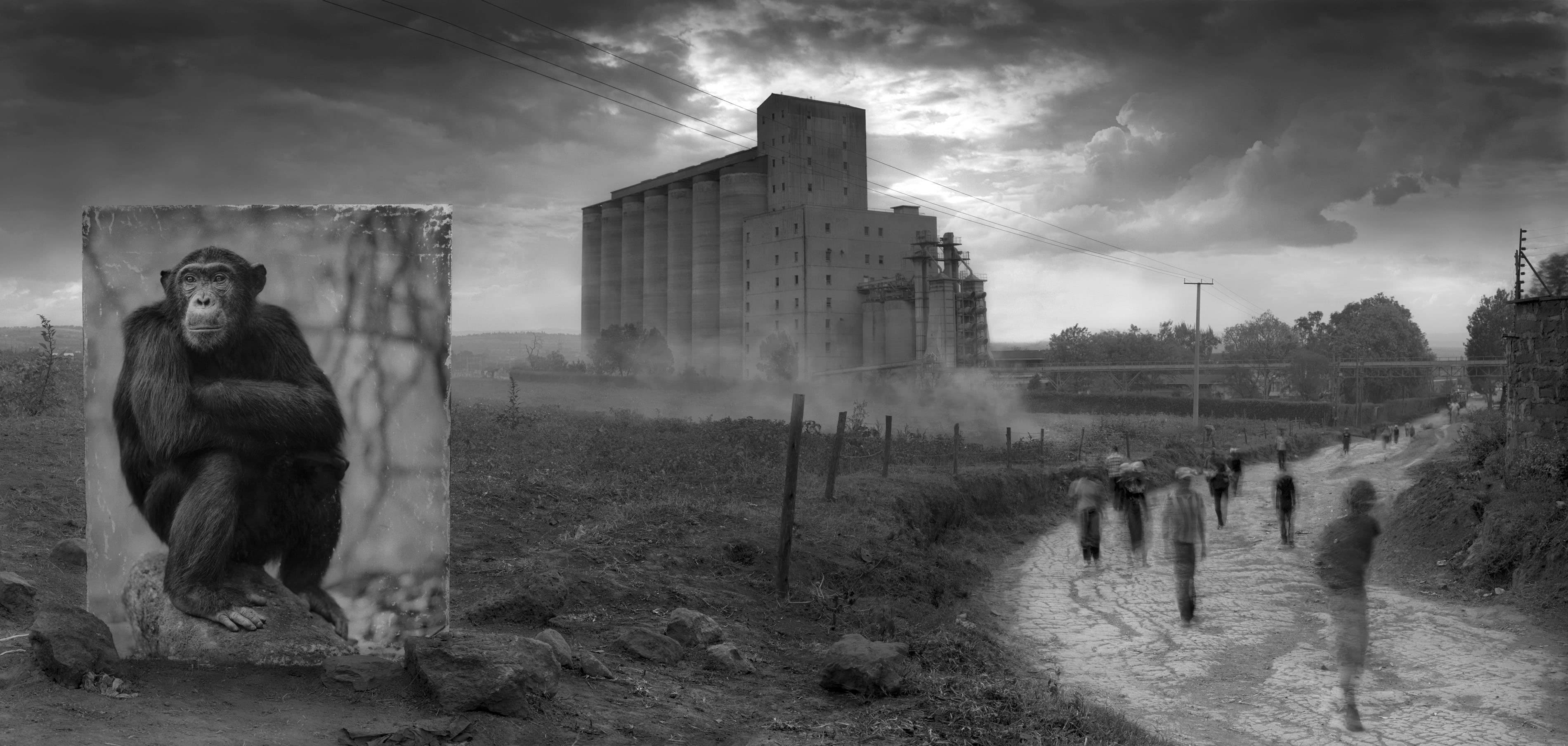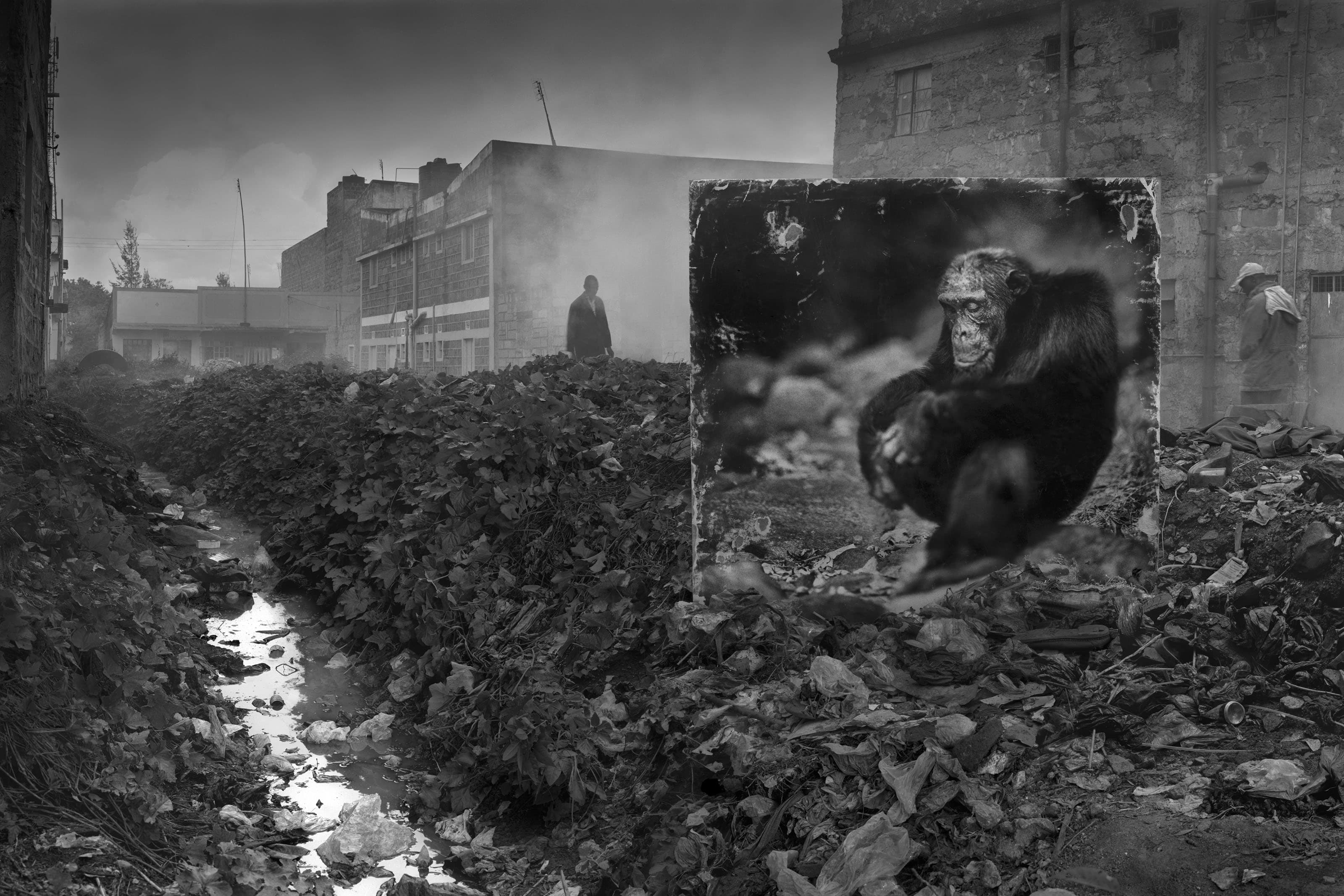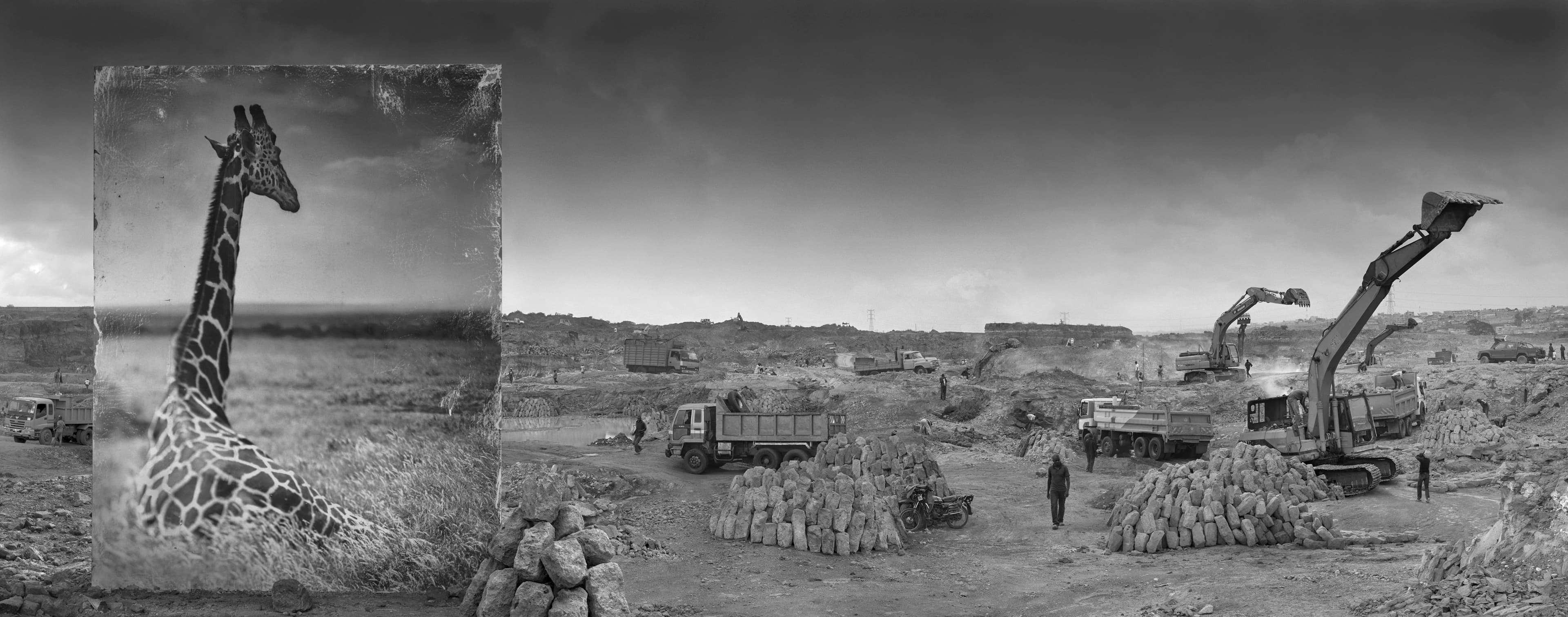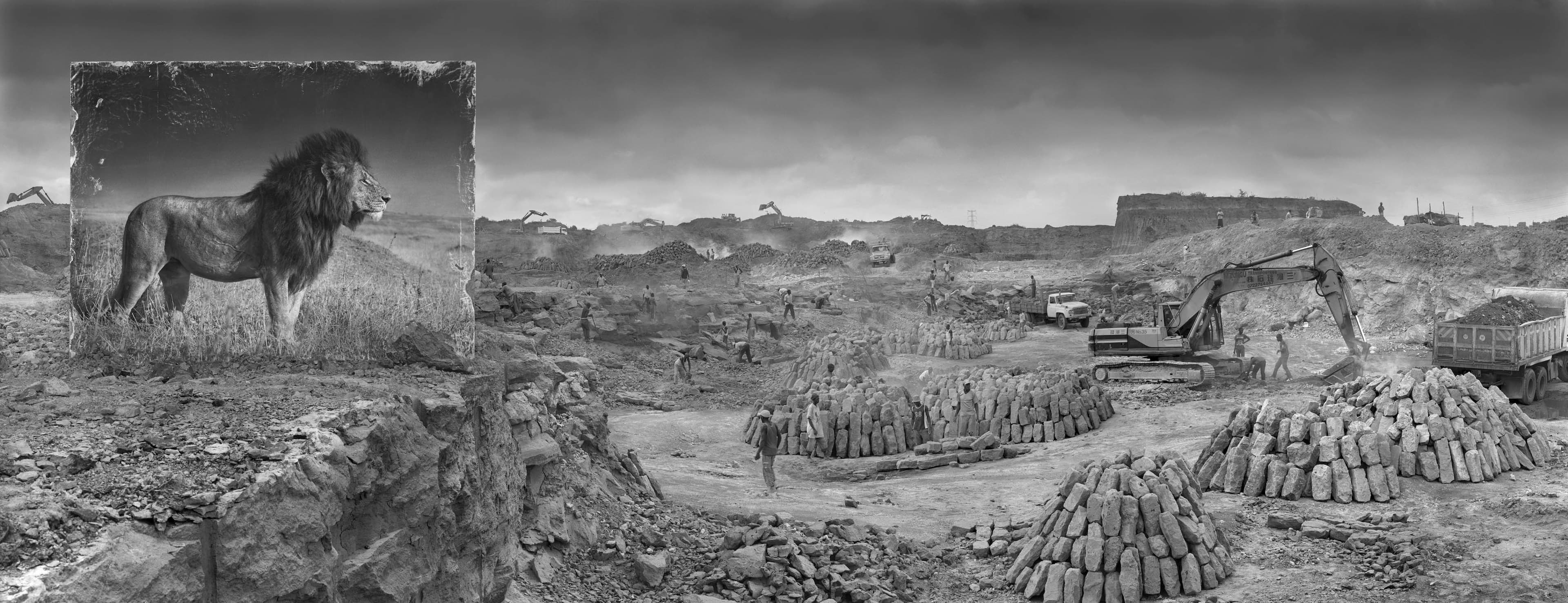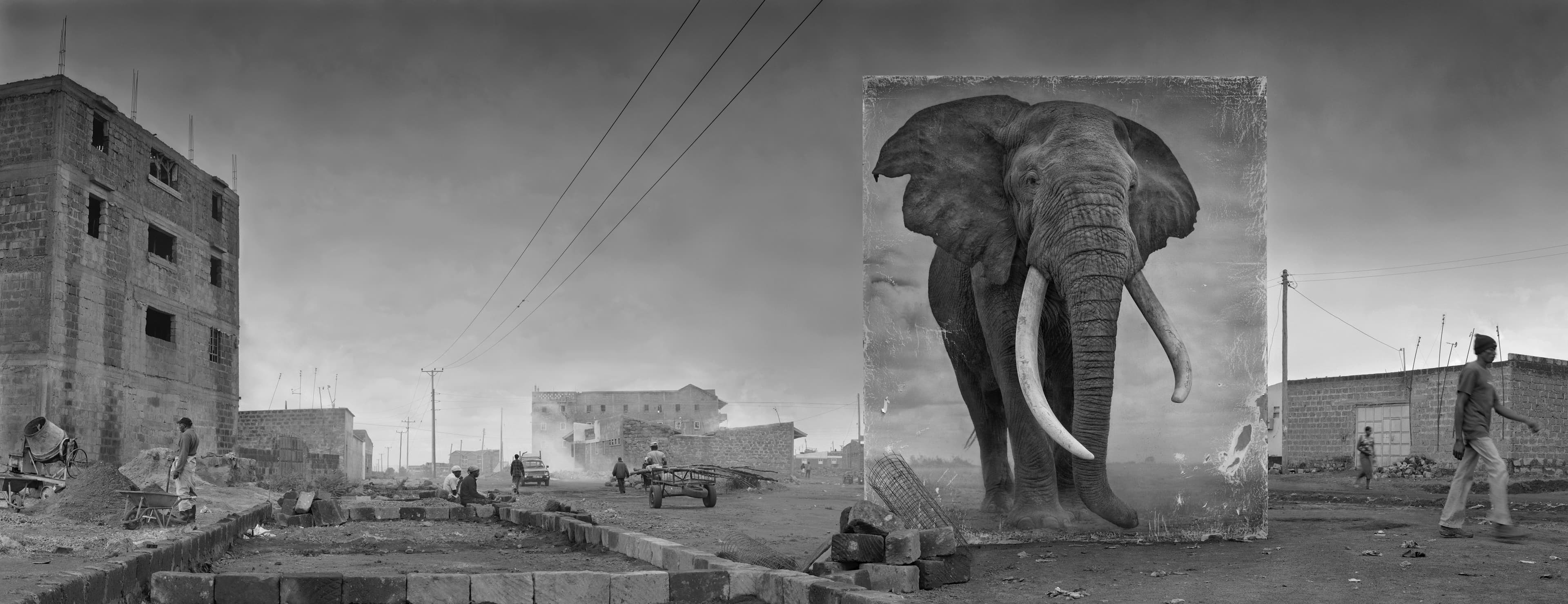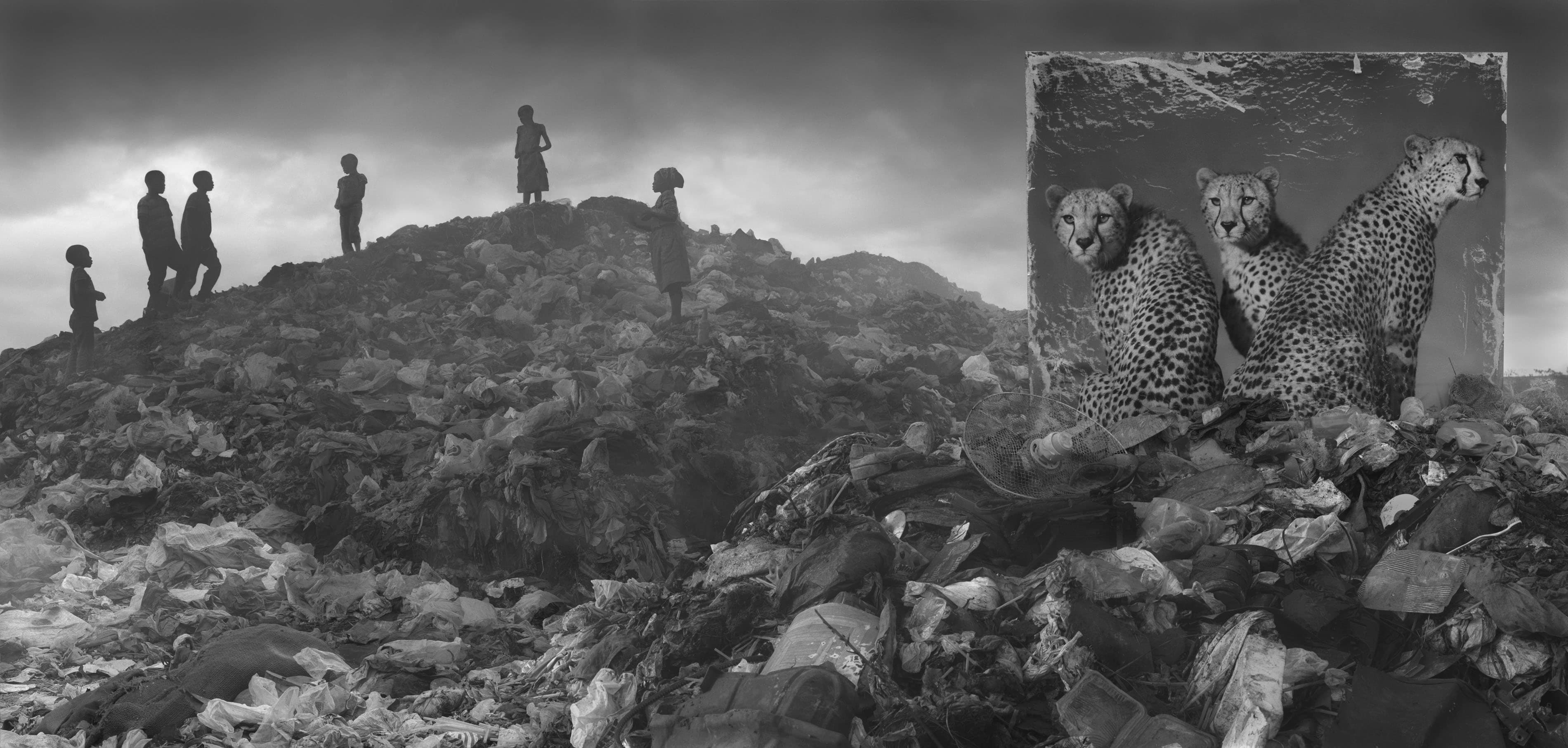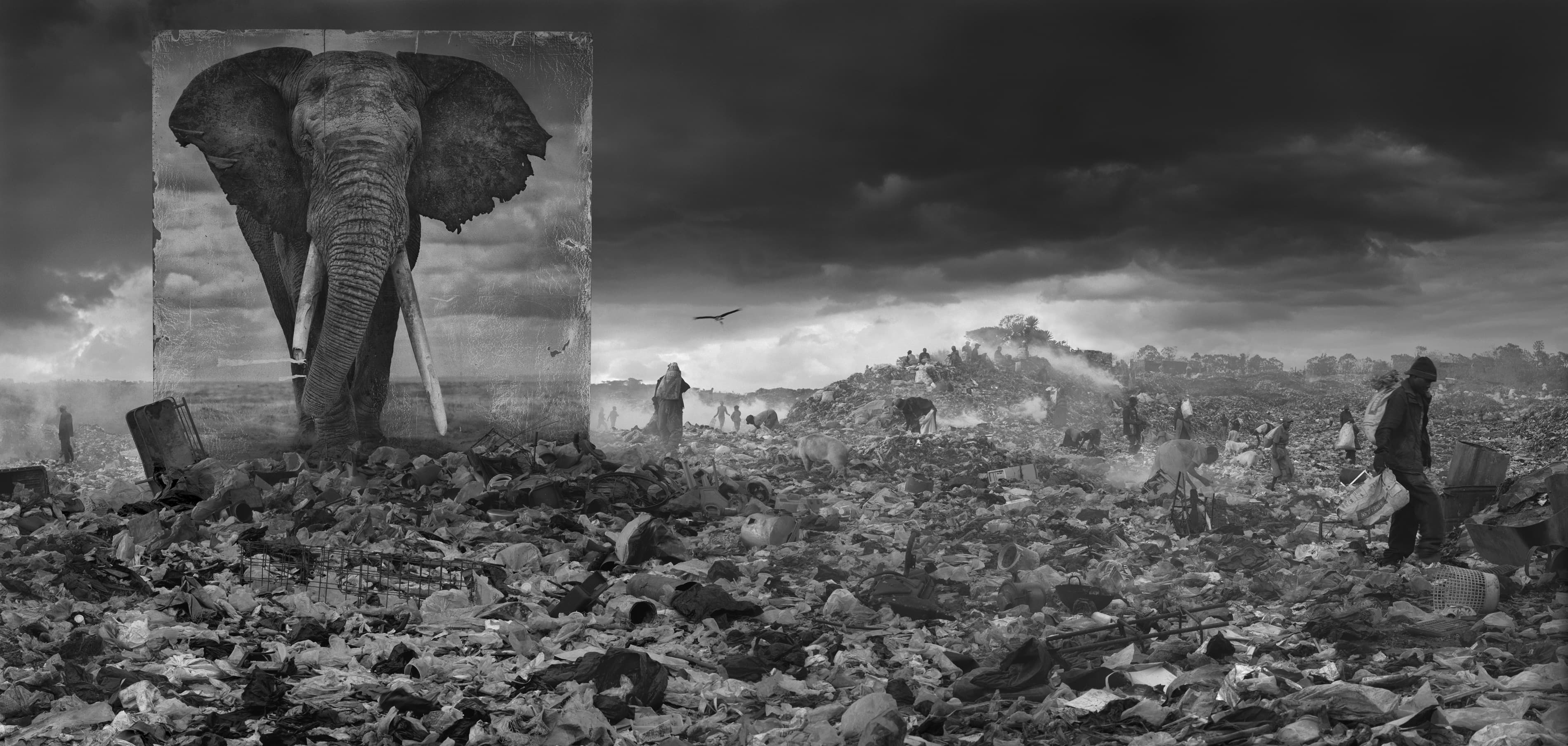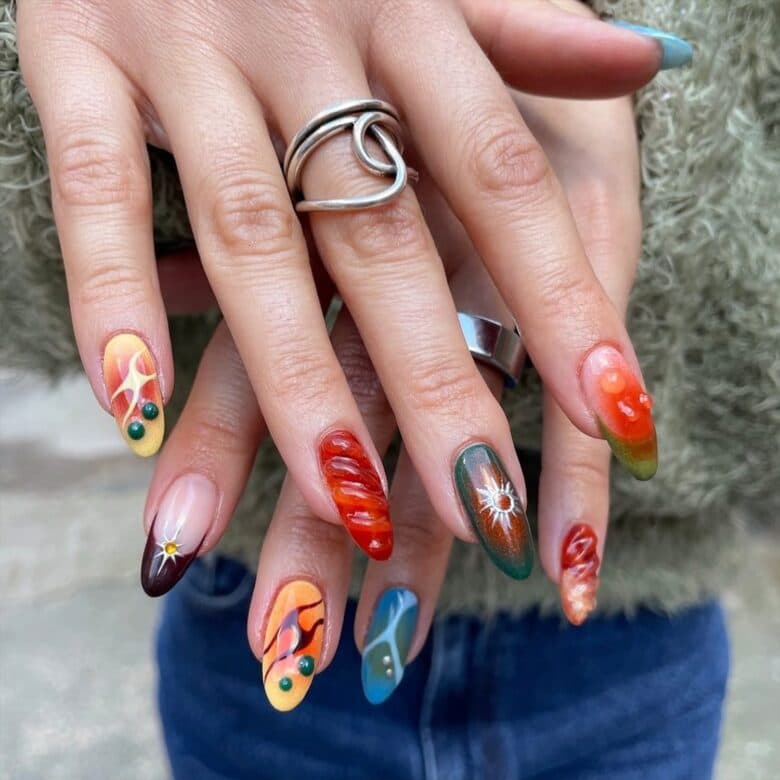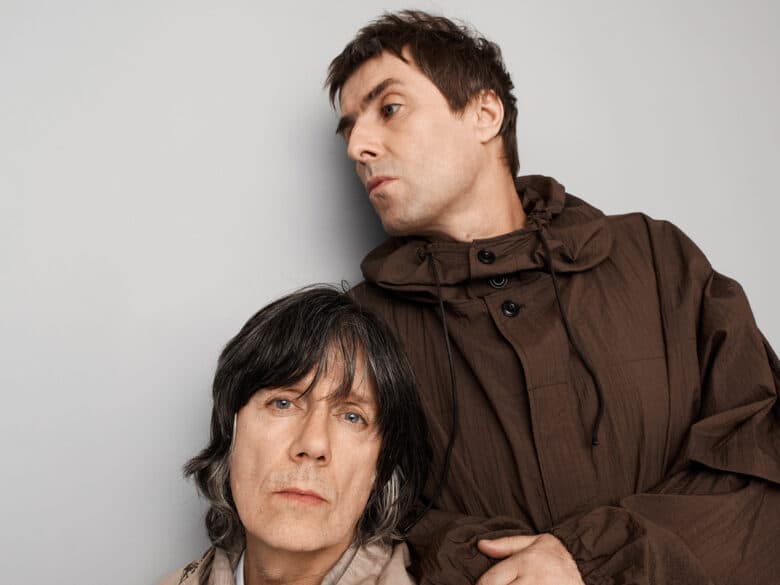Meet the powerful photographer exposing the world’s environmental reality
A photographer best known for his captivating portraits of African animals in the wild, taken to raise awareness of extinction risks, now Nick Brandt is turning the attention onto us as humans. In his series Inherit the Dust, the photography is astonishingly moving, and utterly vital: depicting the industrial and urban wastelands we have created in our world, Brandt imposed life-size panels of his animal portraits into these landscapes. Serving as a shocking reminder of how the environment has been affected, it’s evident how distant the past has become, and how dire the present future looks.
From nature’s utopia to manmade dystopia, Nick Brandt’s latest photography series is as jarring as it is mesmerising, with the animals standing proud and almost accusatory, the photographer portrays change, loss and hope as succinctly as ever. Bringing together the animal and human experience, the series grants us picture of the reality we can usually only fearfully imagine. A call to action if there ever was one, Brandt’s work exemplifies the social and political power art can have, striking a chord with even the greatest sceptic, as the reality is forced into view.
We caught up with Nick Brandt to find out about the power he found in photography, to learn how he drew human and animal experience together, and what needs to be done about it all…
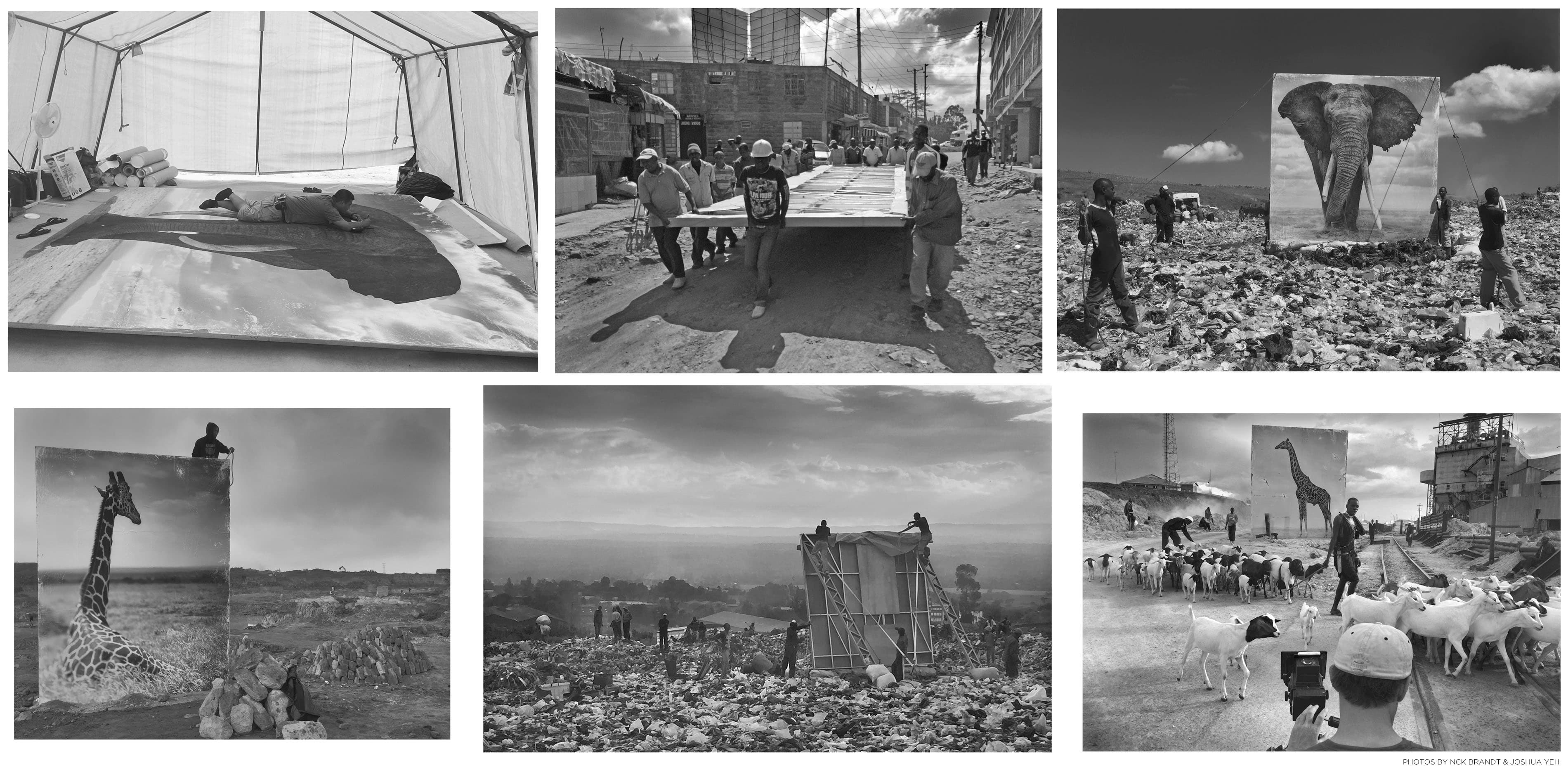
What does photography mean to you?
Photography to me means liberated creativity – the ability to create what I want, how I want, when I want. No money people interfering with my creative vision.
Where do you draw the greatest influence from the most in your work?
Hard to say. I am not consciously influenced by any one thing. I think it’s just general subliminal absorption of any number of visual art forms, whether in painting, film, or photography.
How did the project, Inherit the Dust, come about?
It actually came about not where you would expect – in Africa, but in England, where I grew up. I got to thinking about how on the exact spot where I was sitting in central London, it used to be the home of the elk and brown bear, of the wolverine and cave lion, of the woolly mammoth and woolly rhinoceros. For each of us in the developed world, wherever we live on the planet, animals such as these walked in the very place where we now sit. But of course, most of these animals are long gone.
Meanwhile in parts of present-day Africa, albeit fewer parts by the day, even more extraordinary animals DO still roam. But the destruction of these animals, of these places, is not happening in the past, but in our own immediate present.
However, if we follow our present path of development and destruction, this unique megafauna of Africa will be rapidly gone the way of the megafauna of America and Europe many centuries ago. This was the genesis work, Inherit The Dust. We are living through the antithesis of genesis, of creation right now. It took billions of years to reach a place of such wondrous diversity, and then in just a few shockingly short years, an infinitesimal pinprick of time, to annihilate that.
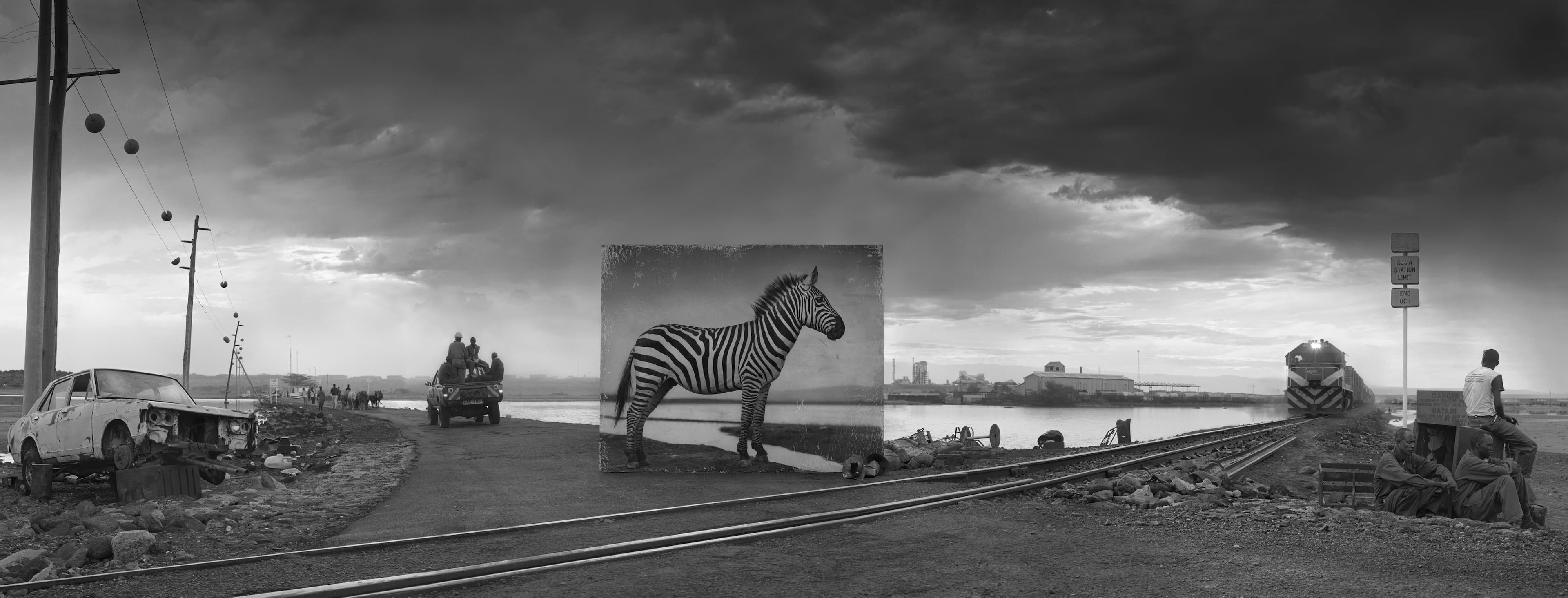
Why do you choose to use black and white for Inherit the Dust?
This was because I had taken the original unreleased portraits of the animals on black and white film. So the whole photo had to also be taken in black and white for those photos to blend in with the landscapes in which I set them.
Do you think digital photography and technology has advanced the photographic experience, especially in terms of conveying reality?
A constant talking point, isn’t it? I like the democratization of photography that it has created – that people with little income can express themselves and get their ideas out into the world more easily. The obvious flip-side to that is there is a gargantuan amount of junk out there too. In terms of digital photography conveying reality, it depends if that’s how you want to use it.
By incorporating animals what are you saying about the human experience?
Actually, it’s not just the animals that suffer from environmental degradation. It is, of course, also us. As the environment breaks down, humans suffer and die also. Modern day humans seem to have learned little from what has come before. History is littered with the collapse of previous civilizations that imposed far too much burden on their surrounding natural world. Now, with so vastly many more of us, with our impact so much more all-encompassing, it’s not ‘just’ a region that is destroyed as in the past. If current trends continue, the destruction can and will mushroom to an ecological – and resulting civilizational collapse – of our entire planet.
How do you think the relationship between human and animal rights has changed in the past few decades?
It’s improved to some degree, but painfully, painfully slowly.
It has not been helped historically by those who cherry-pick from the Bible (“Man shall have Dominion over Nature”) as an excuse to kill and impose suffering, nor from others historically, like the French philosopher Descartes, whose absurd statement that animals were “emotionless machines” was so incredibly damaging as a way of thinking for so long, and something that any dog owner would tell you is just a bunch of shite.
With animal rights activists in America branded as terrorists by the Republican politicians, and whistleblowers of factory farming abuse in numerous American states subject to arrest and imprisonment, it’s still pretty damned bad.
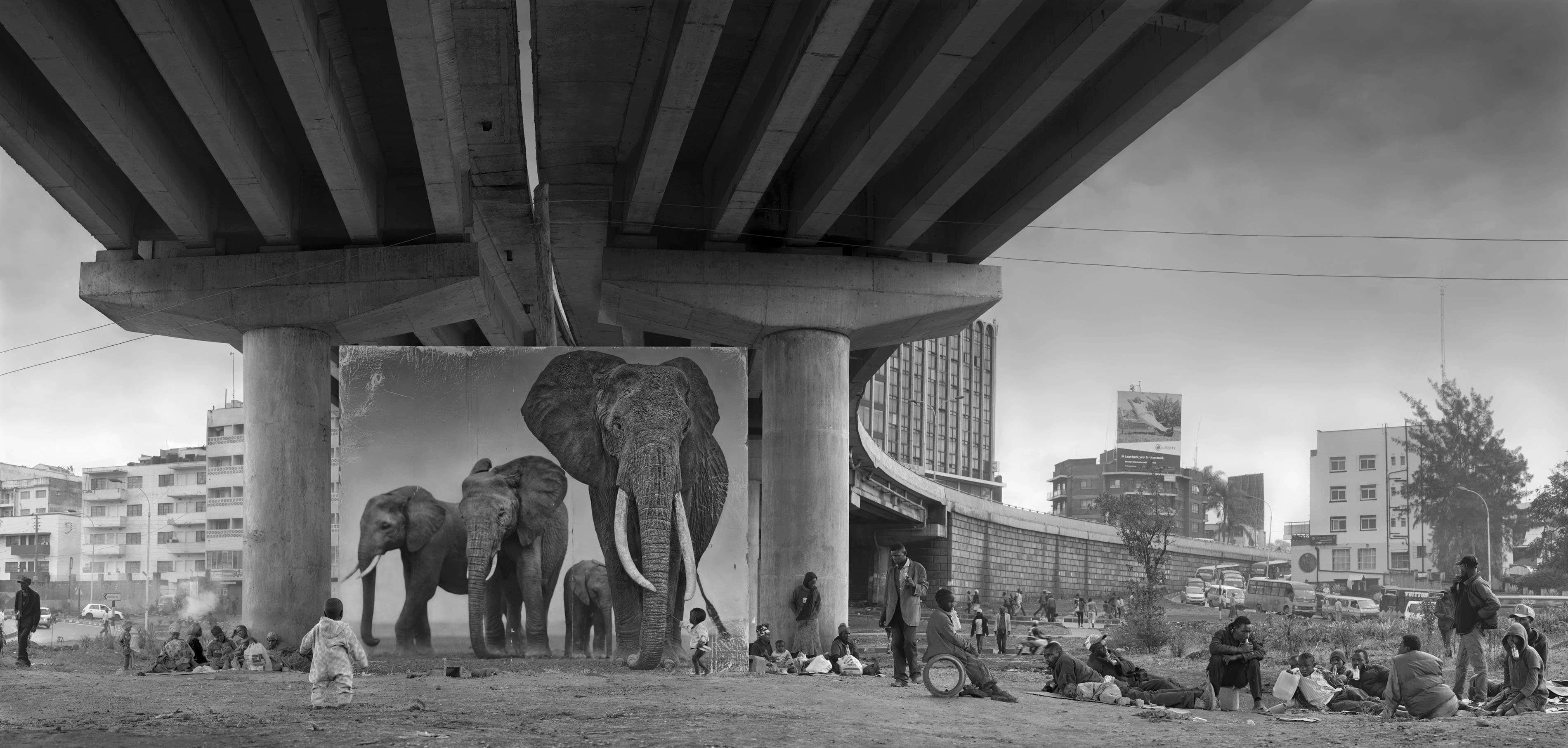
What do you think needs to change with our modern world?
Could you hand over HUNGER to me alone for the next five years to fully answer this question, please? I mean, how to answer this question quickly without sounding trite and simplistic? I’d say my biggest wishes for what needs to change are:
- All money out of politics. At its core, this has created the absolute corruption at the rotten decaying core of American democracy in recent years. Take money out of politics and then there is a chance for the abominable mainly Republican politicians to govern with their consciences, such as may exist, instead of cravenly servicing the funders of their campaigns.
- Meaningfully address climate change now (which needs #1 to happen). Countries like Uruguay have shown it is possible, converting to 95a5 renewable energy in just 5 years. Other countries like Norway are showing the way by committing to electric-only vehicles by 2025.
- Ban factory farming of animals – a ongoing holocaust of billions of animals every year animals suffering lives of torment, torture and misery.
I could go on and on but that’s just three for starters.
Do you feel you’ve experienced social/environmental issues first hand, as an artist and as an individual?
Yes. The themes of my work are very similar to the issues that Big Life Foundation deals with in East Africa. I co-founded Big Life, a non-profit, in 2010 with conservationist Richard Bonham. Big Life now protects 1.6 million acres of ecosystem in Kenya and Tanzania with over 200 rangers. During that time, we have seen, and continue to deal with an ever-growing number of complex and often dramatic issues. It only gets harder as the population continues to rapidly increase, and man invades wildlife habitat and wilderness.
Do you think photography and art can cause social, environmental or political change?
You always hope that it’s possible. Obviously, it’s my chosen method of conveying my feelings, and I hope that the work can be an incremental cog in the wheel of change. However, like with everything these days, it’s that much harder for anything – music, film, art – to break through the noise and sheer volume of Stuff.
What’s next for you?
A new body of work, This Empty World, is coming out in February 2019 with exhibitions in London, New York, Berlin and Los Angeles, and a book published by Thames and Hudson. It’s my first foray into color, digital, night photography, elaborate lighting and sets and huge cast of people. I like being both scared and excited by the new with each project, while continuing with my obsession addressing the escalating destruction of the natural world at the hands of man. In that regard, unfortunately, there will be no shortage of subject matter any time into the future.
Click through the gallery below for a full look at the series ‘Inherit the Dust’, and follow Nick Brandt on Instagram here, and see his website here to stay in the loop.
